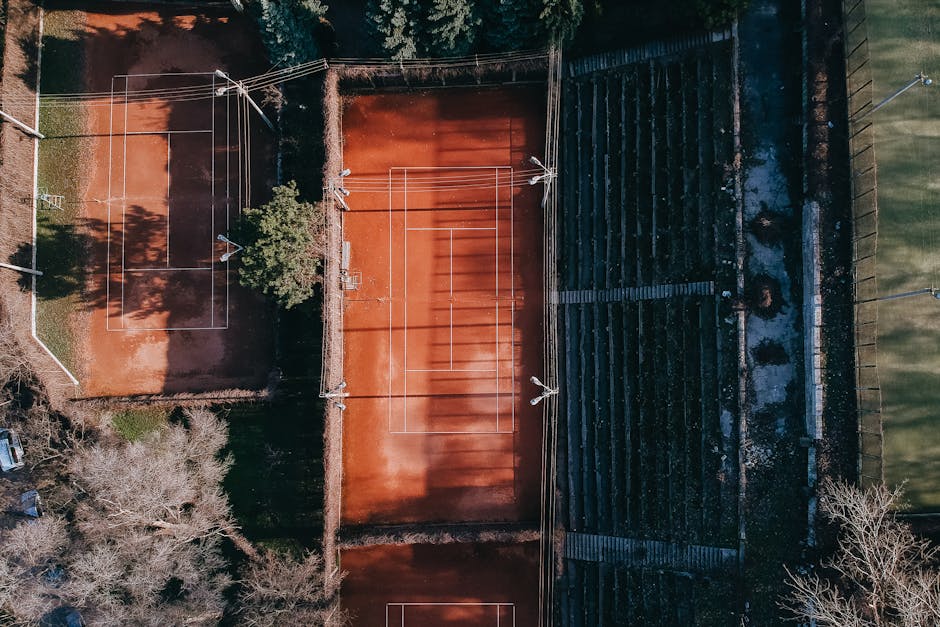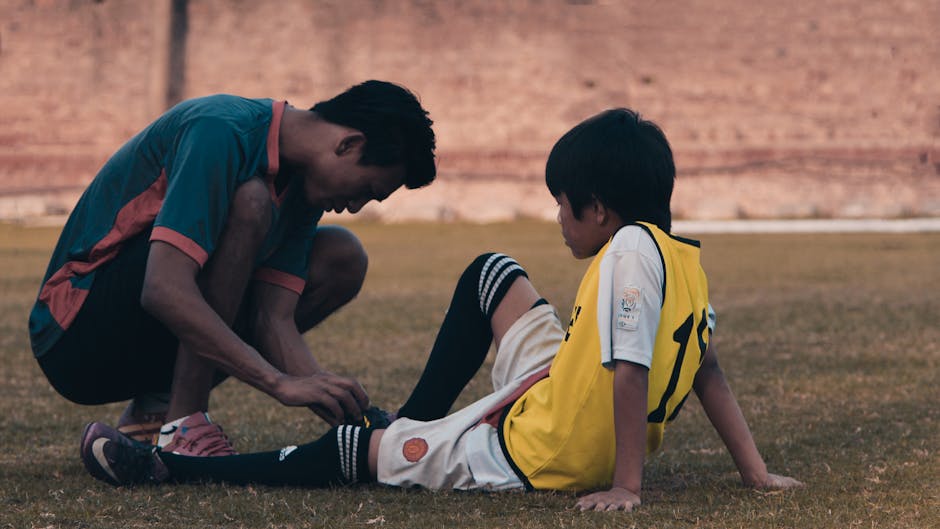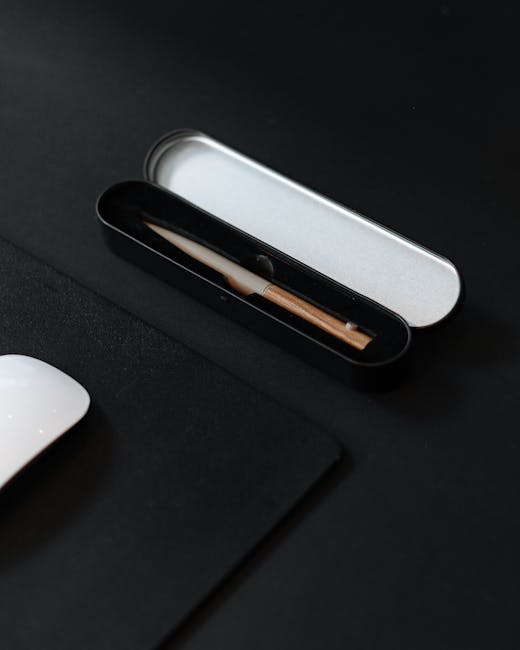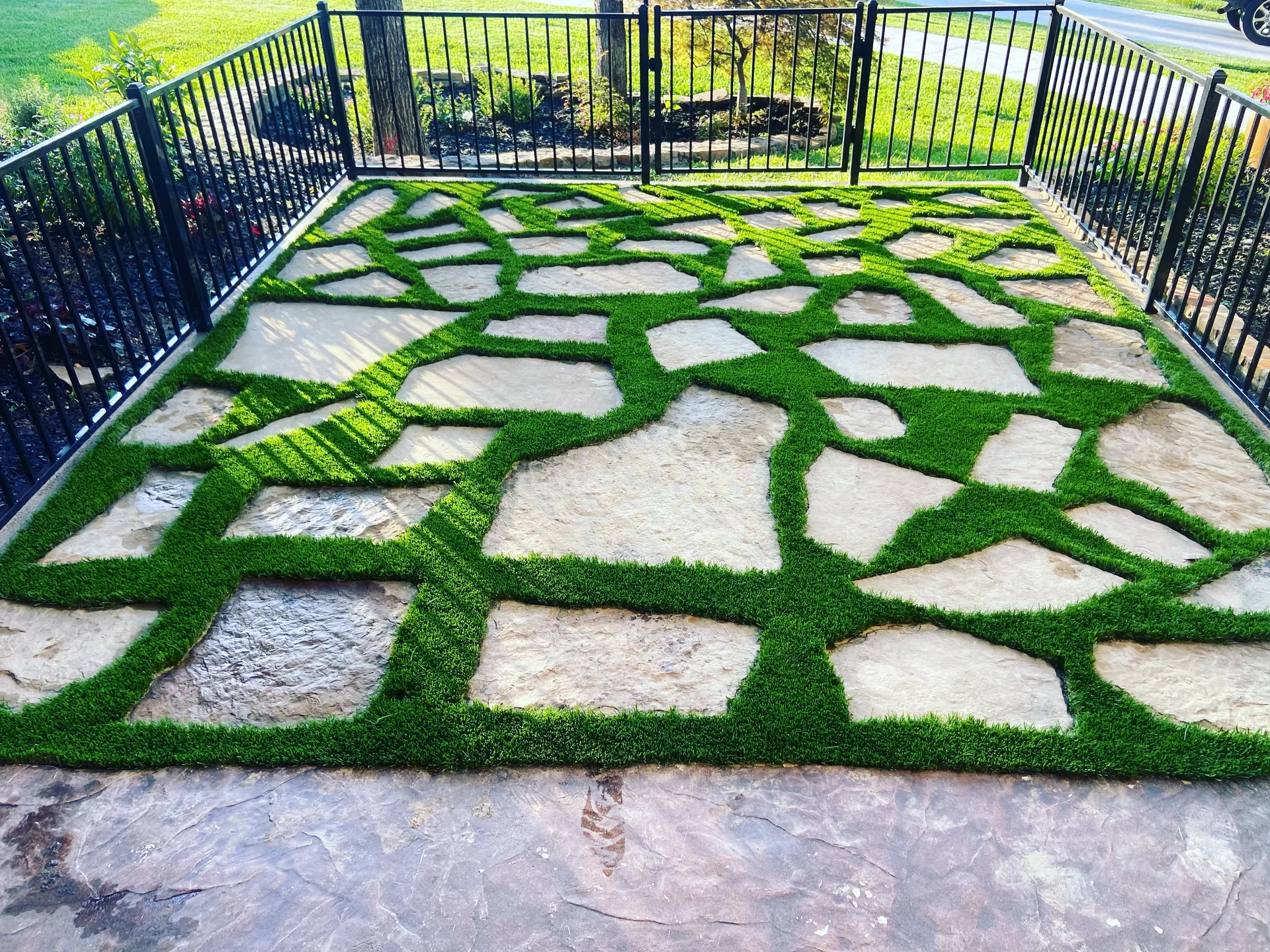
- Introduction to Outdoor Play Areas
- Understanding Playground Turf: Types and Features
- Designing Safe and Engaging Play Spaces
- Benefits of Playground Turf in Outdoor Play Areas
- Best Practices for Installing Playground Turf
- Maintenance and Longevity of Playground Turf
- Case Studies of Successful Playground Turf Installations
- Future Trends in Playground Turf and Outdoor Play Area Design
Introduction to Outdoor Play Areas
Outdoor play areas play a crucial role in the physical, social, and cognitive development of children. These spaces provide opportunities for children to engage in physical activities, interact with peers, and explore their surroundings in a safe and structured environment. As communities become more aware of the importance of outdoor play, there has been a growing emphasis on designing these areas to be both secure and stimulating for children of all ages and abilities.
The demand for high-quality play spaces has led to the development of innovative materials and design strategies that enhance the functionality and safety of these areas. One such material that has gained popularity in recent years is playground turf. This synthetic surface offers a range of benefits that make it an attractive option for creating safe and engaging play environments.
Playground turf is designed to mimic the look and feel of natural grass while providing a more durable and low-maintenance alternative. It is made from polyethylene or polypropylene fibers that are tufted into a backing material and then infilled with a mixture of sand and rubber granules. This composition provides a cushioned surface that can help reduce the risk of injuries from falls, making it particularly suitable for areas with playground equipment.
In addition to its safety features, playground turf is also designed to be aesthetically pleasing and versatile. It can be installed in a variety of settings, from residential backyards to school playgrounds and public parks. The turf is available in different colors and textures, allowing for creative designs that can include patterns, games, and themed play areas, which can further enhance the play experience for children.
Another significant advantage of playground turf is its ability to withstand heavy use and varying weather conditions. Unlike natural grass, which can become muddy or worn out, synthetic turf remains consistent in appearance and performance throughout the year. This durability ensures that the play area remains accessible and enjoyable for children regardless of the season.
Overall, the introduction of playground turf in the design of outdoor play areas represents a positive shift towards creating safer, more engaging, and resilient environments for children. Its combination of safety, low maintenance, and versatility makes playground turf a valuable component in the development of modern play spaces.
Understanding Playground Turf: Types and Features
Playground turf, also known as synthetic turf or artificial grass, is a popular choice for creating safe and engaging outdoor play areas. Understanding the different types and features of playground turf is crucial for making informed decisions about its use in various settings.
There are several types of playground turf available, each designed to serve specific needs and preferences. Primarily, playground turf is divided into three categories: polyethylene, polypropylene, and nylon. Polyethylene is favored for its softness and natural appearance, making it a common choice for playgrounds. Polypropylene is known for its durability and lower cost, while nylon is the most robust and resilient option, suitable for high-traffic areas.
Playground turf is equipped with various features that enhance its performance and safety. One significant component is the shock-absorbing underlayment, which helps to cushion falls and reduce the risk of injury. This underlayment, often made from recycled materials like rubber, complies with safety standards set by organizations like the American Society for Testing and Materials (ASTM) and the International Play Equipment Manufacturers Association (IPEMA). Shock absorption characteristics are paramount in reducing the severity of injuries, especially in areas where children are likely to jump or fall.
Another notable feature of playground turf is its high permeability, which facilitates efficient drainage. This is essential for preventing water accumulation and ensuring that the play area remains safe and usable even after heavy rainfall. The turf’s design includes a perforated backing that allows water to pass through quickly, minimizing puddles and waterlogging.
Playground turf also incorporates UV stabilization to withstand prolonged exposure to sunlight without fading or deteriorating. This feature is critical for maintaining the turf’s aesthetic appeal and functional integrity over time, particularly in sunny climates.
Durability is another key aspect of playground turf. High-quality products are designed to endure heavy use and resist wear and tear. The fibers are often constructed with a blend of yarns and tufted at a high density, ensuring that the turf maintains its structure and appearance even under constant foot traffic.
In terms of maintenance, playground turf is relatively low-maintenance compared to natural grass. It does not require mowing, watering, or fertilizing, which can translate to significant cost savings and environmental benefits. Regular brushing to keep the fibers upright and occasional washing to remove debris and dirt are generally sufficient to keep the turf in optimal condition.
Lastly, many playground turfs are designed with antimicrobial properties. This feature helps to reduce the growth of bacteria and mold, promoting a healthier play environment for children. The incorporation of antimicrobial agents during the manufacturing process ensures that the turf remains hygienic and safe over its lifespan.
In summary, understanding the different types of playground turf and their features is essential for creating safe and engaging outdoor play areas. By considering factors such as material composition, safety features, durability, and maintenance requirements, one can make informed decisions to enhance the quality and safety of playground environments.
Designing Safe and Engaging Play Spaces
3. Designing Safe and Engaging Play Spaces
Designing outdoor play spaces requires careful consideration of both safety and engagement to ensure that children have a secure and stimulating environment in which to play. The integration of playground turf can significantly enhance both aspects when executed properly. Below are critical points to consider during the design process.
3.1 Safety Considerations
Ensuring the safety of children is paramount in designing play spaces. Playground turf can contribute to safety through several factors:
- Cushioning and Impact Absorption: Playground turf specifically engineered for safety includes padding and shock-absorbing layers that reduce the risk of injury from falls. Studies indicate that high-quality turf can significantly lower the impact forces during falls.
- Non-Toxic Materials: Quality turf is made from non-toxic materials, ensuring no harmful chemicals are released, which is crucial for children’s health.
- Accessibility: Playground turf provides a firm and even surface, making it accessible for children with mobility devices, thus complying with ADA (Americans with Disabilities Act) standards.
3.2 Design for Engagement
Creating an engaging environment is essential to stimulate children’s physical, social, and cognitive development. Here are ways to enrich play spaces with playground turf:
- Variety of Play Areas: Include different zones such as open spaces for running, areas designated for specific games, and quiet corners for imaginative play. This variety caters to different play preferences and developmental stages.
- Incorporate Natural Elements: Combining natural elements like trees, shrubs, and water features with turf can enhance sensory experiences and teach children about nature.
- Interactive Elements: Install interactive turf designs, such as hopscotch patterns, mazes, or color zones, to encourage various forms of play and physical activity.
3.3 Inclusivity in Design
Play spaces should be inclusive, allowing children of all abilities to participate fully. Considerations include:
- Accessible Paths: Ensure that pathways leading to and within the playground are smooth and navigable for children with disabilities.
- Inclusive Equipment: Select play equipment designed to be inclusive, such as swings with adaptive seats or sensory play panels.
- Spaces for Caregivers: Provide comfortable and accessible areas for parents and caregivers to supervise their children.
By thoughtfully integrating these design principles, playground turf can be used to create play areas that are both safe and engaging for all children.
Benefits of Playground Turf in Outdoor Play Areas
Playground turf is increasingly becoming a popular choice for outdoor play areas due to its numerous benefits, ranging from enhanced safety to aesthetic appeal. Understanding these benefits can help in making informed decisions when designing and installing play spaces.
Enhanced Safety
One of the primary reasons for using playground turf is the safety it offers. Unlike natural grass, which can become uneven and create tripping hazards, playground turf provides a consistent, level surface. Additionally, many types of playground turf are designed to offer shock absorption, reducing the risk of injuries from falls.
| Surface Material | Shock Absorption (G-max value) |
|---|---|
| Playground Turf | Less than 200 |
| Asphalt | Over 700 |
Low Maintenance
Playground turf requires significantly less maintenance compared to natural grass. Natural grass lawns necessitate frequent mowing, watering, fertilizing, and pest control. In contrast, playground turf maintains its appearance and functionality with minimal upkeep, primarily requiring regular sweeping to remove debris.
All-Weather Usability
Another key benefit is the all-weather usability of playground turf. Natural grass can become muddy and unusable after rain. However, high-quality turf systems are designed with efficient drainage structures that prevent water accumulation. This makes the surface ready for play almost immediately after rain, thereby increasing the usability time of the play area.
Allergen Reduction
Playground turf can also contribute to a healthier play environment by reducing allergens. Natural grass can emit pollen, which is a common allergen. By switching to synthetic turf, the exposure to pollen is minimized, making it a more suitable option for children who suffer from allergies.
Environmental Impact
Contrary to what one might assume, playground turf can be environmentally friendly. Modern turf systems use materials that are recyclable. Additionally, the water savings from not needing irrigation can be substantial. Some studies suggest that synthetic turf can save as much as 55 gallons of water per square foot annually when compared to natural grass.
Cost-effective in the Long Run
While the initial installation cost of playground turf can be higher than natural grass, it tends to be more cost-effective over time. Due to reduced maintenance requirements and longer lifespan, the overall expense of maintaining a playground with synthetic turf can be lower compared to natural grass.
- Reduced need for lawn care equipment
- Lower water bills
- Fewer chemicals and fertilizers
In summary, playground turf offers multiple benefits that range from enhanced safety and low maintenance to all-weather usability and allergen reduction. These advantages make it an appealing choice for creating safe and engaging outdoor play areas.
Best Practices for Installing Playground Turf
Installing playground turf requires meticulous planning and execution to ensure safety, durability, and functionality. The following best practices are essential for achieving optimal results.
Site Preparation
Proper site preparation is crucial for the successful installation of playground turf. The ground should be cleared of any debris, rocks, and vegetation. A stable sub-base is required, often consisting of crushed stone or similar materials, compacted to create a solid foundation.
- Grading: Ensure the area is graded properly to prevent water pooling, which can damage the turf.
- Compaction: Use mechanical compactors to achieve the necessary soil density and stability.
Choosing the Right Turf
Not all playground turfs are created equal. It is important to choose a product that meets safety standards and is appropriate for the intended use. Factors to consider include material composition, pile height, and the presence of a shock-absorbing underlayer.
- Material: Opt for high-quality synthetic fibers that can withstand heavy use and varying weather conditions.
- Pile Height: Consider the pile height for comfort and safety; a standard recommendation is approximately 1-1.5 inches.
- Shock Absorption: Ensure the turf has an effective underlay to minimize injury risks from falls.
Installation Techniques
Correct installation techniques are essential to ensure the longevity and performance of the playground turf.
- Seaming: Secure seams using strong adhesive or sewing to prevent separation over time.
- Infill: Distribute infill material evenly to give the turf a natural feel and prevent matting.
- Anchoring: Fix the edges of the turf securely to prevent lifting and tripping hazards.
Compliance with Safety Standards
Adhering to safety standards is critical in the installation of playground turf. Following guidelines such as those set by ASTM International can help ensure that the turf meets necessary safety criteria.
- Impact Attenuation: Use turf systems that pass ASTM F1292 standards for impact attenuation to reduce head injury risks.
- Flame Resistance: Ensure the turf meets fire safety standards to minimize risks of fire-related accidents.
Final Inspection
A final inspection is necessary to confirm that the installation has been carried out correctly and meets all standards and specifications. Regular inspections should also be conducted post-installation to maintain safety and performance.
- Surface Check: Ensure the surface is even and free of any bumps or loose areas.
- Seam Integrity: Verify that all seams and edges are securely fixed and do not pose any hazards.
Maintenance and Longevity of Playground Turf
Maintenance is crucial in ensuring that playground turf remains safe, appealing, and long-lasting. Regular upkeep can extend the life of the turf and help maintain its protective features. Here are essential practices for maintaining and enhancing the longevity of playground turf.
1. Regular Cleaning
Regular cleaning is necessary to keep the playground turf free of debris, dirt, and contaminants. Debris such as leaves, sticks, and trash should be removed daily to prevent any potential hazards.
- Use a leaf blower or a broom to clear the surface.
- Rinse the turf with water to remove dust and other fine particles.
- Spot clean stains promptly using mild soap and water.
2. Grooming and Brushing
Brushing the turf helps to keep the fibers upright and maintains a natural look and feel. It is recommended to groom the turf regularly, especially in high-traffic areas.
- Use a stiff bristle broom or a specialized turf brush.
- Brush the turf in multiple directions to prevent matting.
- Conduct this process monthly or as needed based on usage.
3. Inspecting for Damage
Routine inspections are necessary to identify any signs of wear and tear that could compromise safety. Regular checks can help in early detection of issues such as tears, holes, or loose seams.
- Inspect the turf for any damage on a monthly basis.
- Repair minor damages promptly to prevent them from worsening.
- If significant damage is found, consult with a professional for repair or replacement.
4. Infill Maintenance
The infill provides crucial support and cushioning. Maintaining the correct infill level ensures the turf remains safe and comfortable.
- Regularly check the infill levels and replenish if necessary.
- Evenly distribute the infill to maintain a consistent playing surface.
- Consult the manufacturer’s guidelines on the type and amount of infill required.
5. Preventing and Managing Weeds
Weeds can occasionally grow through the turf, especially around the edges. Implementing weed management strategies can prevent infestations.
- Apply a weed barrier during installation.
- Use non-toxic weed control treatments as needed.
- Manually remove any weeds that do appear to prevent spreading.
The following table summarizes key maintenance activities and their recommended frequency:
| Maintenance Activity | Frequency |
|---|---|
| Debris Removal | Daily |
| Surface Rinsing | Weekly |
| Grooming/Brushing | Monthly |
| Damage Inspection | Monthly |
| Infill Replenishment | As Needed |
| Weed Management | As Needed |
Undertaking these maintenance practices helps to ensure that playground turf remains in optimal condition, providing a safe and enjoyable environment for children to play. By staying committed to regular upkeep, playground turf can offer an extended lifespan and continuous performance.
Case Studies of Successful Playground Turf Installations
Case Studies of Successful Playground Turf Installations
Central Park, New York City
In New York City’s Central Park, a range of playgrounds use synthetic turf to enhance the safety and quality of play areas. Central Park’s playgrounds benefit from reduced maintenance and increased durability offered by playground turf. The turf provides a consistent, soft surface that reduces the risk of injuries from falls. Feedback from park visitors indicates high satisfaction with the cleanliness and safety of the turf-covered playgrounds, making them popular destinations for families.
Discovery Park, Seattle
Discovery Park in Seattle integrated playground turf as part of its efforts to create environmentally friendly, visually appealing, and safe play spaces. The installation of playground turf helped mitigate issues related to natural grass wear and tear, especially in high-traffic areas. The turf also assists with water drainage, reducing muddy patches and making the play areas more accessible year-round. Parents and children reported positive experiences, noting the comfort and safety of the turf surface for active play.
Hyde Park, London
Hyde Park in London showcases another successful application of playground turf. The park’s playgrounds were upgraded to include synthetic turf in response to concerns about natural grass deterioration and safety hazards from uneven surfaces. The transition to playground turf not only improved the aesthetics of the play areas but also provided a safer environment that could better withstand the high usage levels typical of an urban park. The feedback from both park management and users has been overwhelmingly positive, citing the turf’s role in creating safer and more enjoyable play experiences.
Marina Bay Sands, Singapore
Marina Bay Sands in Singapore features playground turf within its rooftop garden play area. This application demonstrates the versatility of playground turf in urban, high-density environments. The turf contributes to the visual appeal while ensuring a safe and cushioned surface for children. Despite the exposure to intense sunlight and heavy rainfall common to Singapore, the playground turf has proven resilient and easy to maintain, offering a reliable surface for year-round outdoor play.
- Enhanced Safety: All case studies emphasize the role of playground turf in improving safety by reducing the risk of injury from falls.
- Durability and Maintenance: The turf installations have shown significant durability and have required less maintenance compared to natural grass, resulting in long-term cost savings.
- User Satisfaction: Feedback from users, including parents and park visitors, highlights a high level of satisfaction with the turf’s comfort, safety, and cleanliness.
- Environmental Adaptation: The successful integration of playground turf in diverse climates and environments showcases its adaptability and resilience.
Future Trends in Playground Turf and Outdoor Play Area Design
The development of playground turf and outdoor play area design continues to evolve to meet the demands of safety, sustainability, and user engagement. Understanding the emerging trends can help stakeholders in making informed decisions for future projects.
1. Technological Advancements
Recent years have witnessed significant advancements in the materials and technology used in playground turf. Innovations include the use of more durable synthetic fibers and shock-absorbing underlays that enhance safety and longevity. These advancements reduce the need for frequent maintenance and increase the overall lifespan of the turf.
2. Sustainability and Eco-Friendly Materials
The trend towards sustainable and eco-friendly materials is gaining momentum. Manufacturers are increasingly offering turfs made from recycled materials, and there is a growing emphasis on ensuring that these products are recyclable at the end of their life cycle. This trend not only contributes to environmental conservation but also meets the increasing demand for green building certifications.
3. Inclusive Play Design
Modern playground designs are increasingly focusing on inclusivity. Creating play areas that cater to children of all abilities is becoming a standard practice. This involves integrating accessible pathways, sensory play elements, and turf that provides stable footing for all users, including those with mobility challenges.
4. Integration of Natural Elements
There is a move towards blending artificial turf with natural elements. This hybrid approach often includes the integration of plants, natural shade, and water features to create a more immersive and diverse play environment. Such designs not only enhance the aesthetic appeal but also provide educational opportunities about nature and the environment.
5. Interactive and Educational Features
Playgrounds are evolving to include more interactive and educational features. Technologies such as augmented reality (AR) and interactive play panels are being incorporated to create engaging and educational play experiences. These additions can stimulate cognitive development and make playtime both fun and educational.
6. Enhanced Safety Standards
Safety remains a paramount concern in playground design. Future trends indicate stricter safety standards and certifications for playground turf. Enhanced safety measures can include better impact attenuation, lower rotational falls, and rigorous compliance with global safety standards such as ASTM and EN.
7. Community-Involved Design
Engaging the community in the design process is becoming more common. Involving parents, children, and local stakeholders ensures that the playground meets the specific needs and preferences of its users. This collaborative approach can lead to more successful and well-utilized play areas.
The future of playground turf and outdoor play area design is driven by these trends, aiming to create safer, more enjoyable, and inclusive spaces for all children. Adopting these trends can lead to dynamic and sustainable play environments that promote physical, cognitive, and social development.



